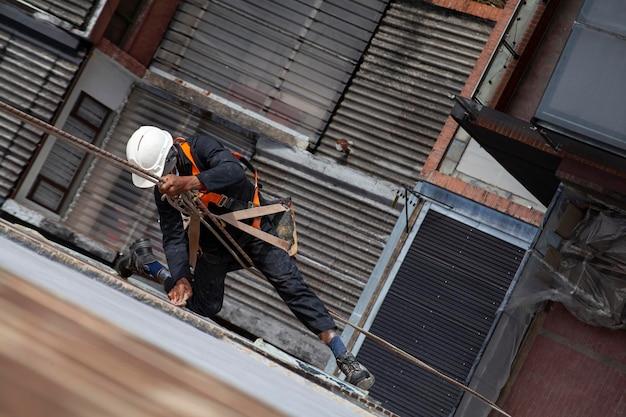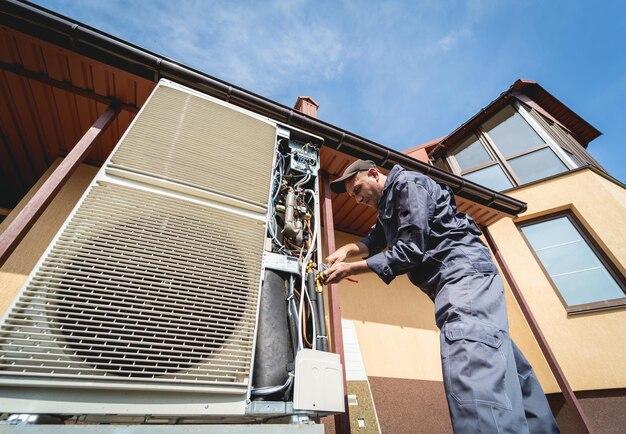Cleaning your dryer vent is an essential maintenance task that you shouldn’t overlook. A clogged dryer vent not only reduces the efficiency of your dryer but can also pose a serious fire hazard. While some dryer vents are situated on the roof, accessing them can be a challenge. Fortunately, there are alternative methods to clean your dryer vent without having to climb onto the roof.
In this blog post, we will discuss how to clean your dryer vent without the need to go on the roof. We will explore different techniques and tools you can use to remove the built-up lint and debris, ensuring proper airflow and dryer performance. Find answers to questions like “How often should you clean dryer vent on the roof?” and “Can you clean a roof dryer vent from inside?” We will also provide tips on preventing clogs and maintaining a safe and efficient dryer vent system. So let’s get started and keep your dryer running smoothly and safely!
How to Clean Your Dryer Vent Without Going on the Roof
Schedule Regular Vent Maintenance
Regular dryer vent maintenance is essential to keep the air flowing freely and prevent lint buildup. Rather than hiring professionals or dealing with the hassle of going on the roof, there are a few simple steps you can follow to clean your dryer vent without any acrobatics.
Gather the Tools You’ll Need
Before embarking on this quest for dryer vent cleanliness, make sure you have the necessary tools at your disposal. You’ll need a vacuum cleaner with a long flexible attachment, a dryer vent cleaning kit (available at most hardware stores), a screwdriver, and a fluffy dog toy (optional, but highly recommended for entertainment purposes).
Unplug and Disconnect
Safety first! Before beginning the cleaning process, unplug your dryer and disconnect the vent hose from the back. This will allow you to access the vent more easily and ensure a thorough cleaning.
Vacuum Away the Culprit
Now, take your trusty vacuum cleaner with the long flexible attachment and delve into the depths of the vent. Cue superhero music Carefully guide the attachment through the vent, sucking up all the lint and debris that have made a cozy home in there. Remember to be gentle, as too much force could damage the vent.
Equip Your Cleaning Kit
Next, it’s time to bring out the big guns – your dryer vent cleaning kit. This kit typically includes a brush and flexible rods that can be assembled to extend the reach. Start by attaching the brush to the rods and slowly feed them into the vent, twisting and turning as you go. This will effectively dislodge any remaining lint and give your vent a much-needed scrub.
Reconnect and Revel
After successfully conquering the lint kingdom, it’s time to reconnect the vent hose to your dryer. Secure it tightly using the screwdriver, ensuring a snug fit. Now you can bask in the glory of a clean, efficient dryer without setting foot on the roof.
Repeat the Process Regularly
To maintain a happy and healthy dryer vent, make sure to repeat this process every six months or more frequently if you use your dryer heavily. By staying diligent with your vent maintenance, you can avoid clogs, reduce fire hazards, and prolong the life of your dryer. So, give yourself a pat on the back – you’ve saved the day (and your laundry) once again!
Stay tuned for more exciting cleaning adventures, and remember, keeping your dryer vent clean doesn’t have to be a rooftop safari. Happy cleaning!
Regularly cleaning your dryer vent is essential for optimal dryer performance and safety. By following these steps, you can keep your dryer vent clean without the need to venture onto the roof. Remember to schedule regular maintenance, gather the necessary tools, and stay consistent with your cleaning routine. Your dryer will thank you, and you can enjoy fresh, fluffy laundry without any worries.
FAQ: How To Clean Dryer Vent Without Going On Roof
Maintaining a clean dryer vent is crucial for the safety and efficiency of your dryer. But what if you don’t want to climb up on your roof to clean it? Don’t worry! In this comprehensive FAQ-style guide, we’ll answer all your burning questions about cleaning dryer vents without the need to go up on the roof. So, let’s get straight to it!
How often should you clean the dryer vent on your roof
You should aim to clean your dryer vent on the roof at least once a year. However, if you notice any signs of a clog or reduced dryer performance, it’s essential to address the issue promptly, regardless of the time that has passed since the last cleaning.
Can a dryer vent go up
Absolutely! Dryer vents can be installed vertically, which means they can ascend through your home’s walls or even up to your roof. Proper installation, however, is crucial to ensure optimal airflow and efficient venting.
Why do they put dryer vents on the roof
The placement of dryer vents on roofs is primarily for safety reasons. By venting the dryer exhaust upwards, any potentially harmful gases, such as carbon monoxide, are directed away from the living spaces of your home. Additionally, it helps prevent lint accumulation in the vent system by utilizing natural air currents.
How can you tell if your dryer vent is clogged
A clogged dryer vent can cause various issues. Look out for warning signs such as longer drying times, excessively hot clothes after drying, a musty smell, or the dryer itself becoming hotter than usual. If you observe any of these symptoms, it’s time to investigate and clean your vent to avoid potential hazards.
How do you snake a dryer vent
Snaking a dryer vent involves using a specialized tool called a dryer vent snake or auger. This flexible rod with a brush attachment is inserted into the vent to dislodge and remove lint and debris. Carefully feed the snake into the vent, rotating it as you push it forward to thoroughly clean the entire length.
Can you clean a roof dryer vent from inside
Yes, you can clean a roof dryer vent from inside your home, saving you the hassle of climbing on your roof. A long flexible brush attachment can be used to reach into the vent from the inside, capturing and removing any lint or debris that may have accumulated.
How do you clean a dryer vent with a shop vac
Cleaning your dryer vent with a shop vac is a simple and effective method. Attach the narrow nozzle of your shop vac to the vent opening and use the vacuum’s suction power to remove lint and debris. Work carefully, taking care not to damage the vent. Don’t forget to clean the filter of your shop vac afterward!
What happens when your dryer vent is clogged
When your dryer vent is clogged, it restricts the airflow necessary for your dryer to function properly. This not only leads to longer drying times but also puts strain on your dryer’s components, potentially shortening its lifespan. Moreover, clogged vents increase the risk of fires, as lint is highly flammable.
How does lint get past the lint trap
While the lint trap catches a significant amount of lint during each drying cycle, some fine particles can still escape and accumulate inside the dryer vent. Over time, these particles can build up, leading to clogs and potential hazards. That’s why regular cleaning beyond the lint trap is essential.
Is it okay to vent a dryer into the attic
Venting a dryer into the attic is not recommended. The excessive moisture from the dryer can cause mold growth and damage insulation in your attic, leading to costly repairs. It’s crucial to vent dryers directly outside your home or through appropriate channels to ensure the safe removal of moisture and lint.
Will a clogged dryer vent cause the dryer not to heat
Absolutely! A clogged dryer vent can restrict airflow, causing the dryer to overheat. In response, the dryer may shut off the heating element as a safety measure. If your dryer isn’t producing heat, it’s worth checking and cleaning the vent to restore proper airflow and dryer functionality.
Is a clogged dryer vent a fire hazard
Yes, a clogged dryer vent poses a serious fire hazard. Lint is highly flammable, and when it accumulates in the vent, it can ignite easily, potentially causing a house fire. Regularly cleaning your dryer vent is crucial to prevent lint buildup and minimize the risk of a devastating fire.
Can you use a leaf blower to clean a dryer vent
While it may sound enticing, using a leaf blower to clean a dryer vent is not recommended. Leaf blowers are not designed for this purpose, and their powerful airflow may cause damage to the vent or push debris deeper into the system. Stick to appropriate tools like brushes and vacuum attachments for effective cleaning.
How can you keep your dryer vent from clogging
Prevention is key to keep your dryer vent from clogging. Here are some tips to follow:
– Clean the lint trap after every drying cycle.
– Regularly inspect the vent opening outside your home and remove any debris.
– Avoid overloading the dryer with clothes.
– Use a lint brush to clean the trap and vent periodically.
– Schedule professional dryer vent cleaning at least once a year.
Is it okay to vent the dryer through the roof
Venting the dryer through the roof is a common practice and considered safe when done correctly. Proper installation, including appropriate ventilation materials and securing the vent to prevent leaks, is essential to ensure optimal performance and reduce the risk of damage to your home.
How do you clean the inside of a dryer vent
To clean the inside of a dryer vent, you can use a long flexible brush specifically designed for this purpose. Insert the brush into the vent from both ends, gently working it back and forth to dislodge lint and debris. Repeat the process until the vent is clean and free from obstructions.
Now that you’re armed with all the answers, you can confidently tackle the task of cleaning your dryer vent without ever going on the roof. Remember, regular maintenance is key to avoid potential hazards, improve dryer efficiency, and keep your home safe. So go ahead, grab your cleaning tools, and give your dryer vent the attention it deserves. Happy vent cleaning, and stay safe!

